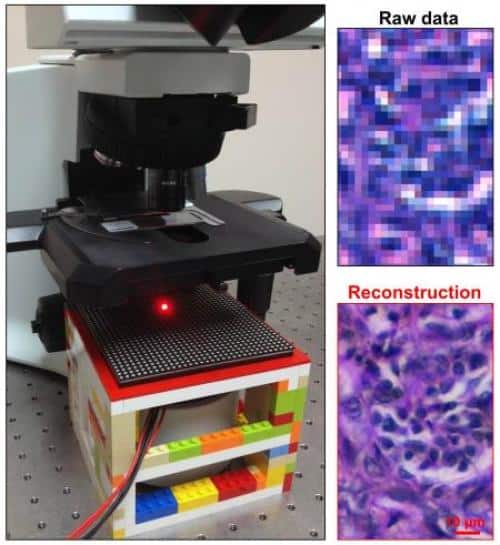A microscope helps us to see objects that are too small for the naked eye by enlarging the objects thousands or millions of times. Lately, a team of researchers at the California Institute of Technology (CalTech) has devised a method to convert a relatively inexpensive conventional microscope into a billion-pixel imaging system that significantly outperforms the best available standard microscope.
Microscopes provide high resolution images of small areas or low resolution pictures of larger fields. Using a technique known as Fourier ptychographic microscopy (FPM), professor Changhuei Yang, leader of the research, innovated a way to computationally correct a standard microscope’s low resolution imagery, producing a billion-pixel picture.
By adding an LED array to an existing microscope, the scientists were able to stitch a 20x-quality image using multiple 2x-quality optical lens. The information gleaned from the LED lights were corrected entirely on a computer, making it an exceptionally cost effective way to create high resolution microscopic images.
The team’s report has been published in the Nature Phototonics journal.
Source: Nature Phototonics
Thanks To: California Institute of Technology
[ttjad keyword=”dslr-camera”]



